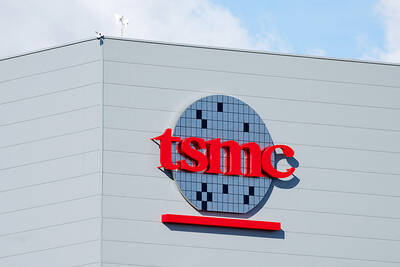Container shipper Wan Hai Lines Ltd (萬海航運) plans to join forces with four foreign counterparts to launch a cargo route between eastern China and India, the company said yesterday.
The route is to launch next month in coordination with Chinese company China Cosco Shipping Corp (中國遠洋海運集團), Japan-founded Interasia Lines Ltd, Hong Kong’s Orient Overseas Container Line (OOCL, 東方海外貨櫃航運) and X-Press Feeders Group of Singapore, Wan Hai said in a statement.
The five companies are upbeat about India’s robust economy, which has over the past two years been growing at a steady 7 percent to 8 percent to replace the UK as the sixth-largest economy in the world, Wan Hai said.
Indian Prime Minister Narendra Modi has been pushing various initiatives such as “Make in India,” “Digital India” and “‘Green’ India” in a bid to sustain momentum, Wan Hai said.
The UN forecasts that India’s population is to reach 1.65 billion by 2050, Wan Hai said, adding that such a huge population is expected to deliver more economic benefits to foreign investors.
The new route is expected to help many Taiwanese firms operating overseas benefit from India’s growth potential, Wan Hai added.
Starting on Jan. 23, the five partners are to provide a once-weekly service, coded route CI3, starting from Shanghai and stopping at Ningbo, Zhejiang; Hong Kong; Shekou, Guangdong; Singapore; Port Klang, Malaysia; Chennai and Kattupalli, India, Wan Hai said.
Each round trip is to take 35 days, with five 4,250 twenty-foot equivalent unit vessels, Wan Hai said.
Wan Hai is to provide two vessels for the service, China Cosco and Interasia are to provide one each and OOCL and X-Press are to provide the fifth.
With a fleet of 90 vessels, Wan Hai has 10 cargo routes to and from India. The CI3 route is expected to broaden the company’s network, allowing it to offer better service to customers in eastern China, Singapore, Malaysia and India.
Despite the announcement, Wan Hai shares yesterday fell 2.82 percent to close at NT$18.95 on the Taiwan Stock Exchange in line with a decline of 0.96 percent on the weighted index.

Taiwan Semiconductor Manufacturing Co (TSMC, 台積電) secured a record 70.2 percent share of the global foundry business in the second quarter, up from 67.6 percent the previous quarter, and continued widening its lead over second-placed Samsung Electronics Co, TrendForce Corp (集邦科技) said on Monday. TSMC posted US$30.24 billion in sales in the April-to-June period, up 18.5 percent from the previous quarter, driven by major smartphone customers entering their ramp-up cycle and robust demand for artificial intelligence chips, laptops and PCs, which boosted wafer shipments and average selling prices, TrendForce said in a report. Samsung’s sales also grew in the second quarter, up

LIMITED IMPACT: Investor confidence was likely sustained by its relatively small exposure to the Chinese market, as only less advanced chips are made in Nanjing Taiwan Semiconductor Manufacturing Co (TSMC, 台積電) saw its stock price close steady yesterday in a sign that the loss of the validated end user (VEU) status for its Nanjing, China, fab should have a mild impact on the world’s biggest contract chipmaker financially and technologically. Media reports about the waiver loss sent TSMC down 1.29 percent during the early trading session yesterday, but the stock soon regained strength and ended at NT$1,160, unchanged from Tuesday. Investors’ confidence in TSMC was likely built on its relatively small exposure to the Chinese market, as Chinese customers contributed about 9 percent to TSMC’s revenue last

With this year’s Semicon Taiwan trade show set to kick off on Wednesday, market attention has turned to the mass production of advanced packaging technologies and capacity expansion in Taiwan and the US. With traditional scaling reaching physical limits, heterogeneous integration and packaging technologies have emerged as key solutions. Surging demand for artificial intelligence (AI), high-performance computing (HPC) and high-bandwidth memory (HBM) chips has put technologies such as chip-on-wafer-on-substrate (CoWoS), integrated fan-out (InFO), system on integrated chips (SoIC), 3D IC and fan-out panel-level packaging (FOPLP) at the center of semiconductor innovation, making them a major focus at this year’s trade show, according

DEBUT: The trade show is to feature 17 national pavilions, a new high for the event, including from Canada, Costa Rica, Lithuania, Sweden and Vietnam for the first time The Semicon Taiwan trade show, which opens on Wednesday, is expected to see a new high in the number of exhibitors and visitors from around the world, said its organizer, SEMI, which has described the annual event as the “Olympics of the semiconductor industry.” SEMI, which represents companies in the electronics manufacturing and design supply chain, and touts the annual exhibition as the most influential semiconductor trade show in the world, said more than 1,200 enterprises from 56 countries are to showcase their innovations across more than 4,100 booths, and that the event could attract 100,000 visitors. This year’s event features 17